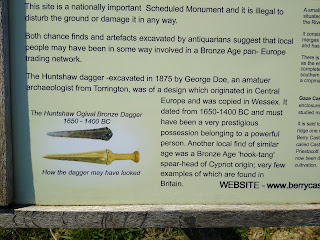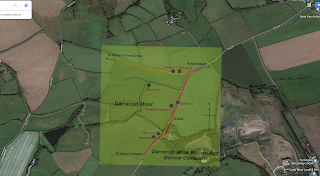Dr Raoul McLaughlin is an expert in Roman economics with a PhD in Roman Economy and Trade beyond Imperial Frontiers. Dr McLaughlin is a founder member of the Classical Association in Northern Ireland, a council member of the Classical Association of Ireland and Associate Editor of their academic journal: ‘Classics Ireland’. He has published three books on the subject of Roman economy in Asia.
Wednesday, 16 December 2020
JIVE TALK: Rome in Asia / Roman Economy with Dr Raoul Mclaughlin
Dr Raoul McLaughlin is an expert in Roman economics with a PhD in Roman Economy and Trade beyond Imperial Frontiers. Dr McLaughlin is a founder member of the Classical Association in Northern Ireland, a council member of the Classical Association of Ireland and Associate Editor of their academic journal: ‘Classics Ireland’. He has published three books on the subject of Roman economy in Asia.
Yule and Saturnalia - the pagan Christmas story
I appeared on History Bro's channel again, this time to discuss Yule!
Survive the Jive accepts Crypto donations
For years generous patrons have asked if they can donate to STJ using crypto currencies. Well now they can.
Bitcoin:
bc1qq4x3pwvpq7kxu0ws8wm7f0yu8cuddfgl9349um
ETH / chainlink:
0x9168c809ca9f3f3655E7160384F7587b1Bc83237
LBRY/ Odysee credits
bNwP9U457hKr29QStp6Mwjwa1bbAyzNy1Q
Monday, 16 November 2020
Interview with Ian Read of Fire + Ice
Learn more on his blog: https://runa-eormensyl.com/
Wednesday, 4 November 2020
The Indo-European Sky Father
The Proto-Indo-Europeans of the Pontic Caspian Steppe and other parts of Eastern Europe in the neolithic worshipped a paternal deity who they called Dyḗus ph₂tḗr “sky father”. With comparative linguistics and comparative mythology we can learn a lot about this ancient god from whom Greek Zeus, Roman Jupiter, Irish Dagda, Vedic Dyáuṣ Pitṛ́ and Norse Odin and many others also derive. In this video I explain what we know about the god’s mythic roles relating to cattle, his relationship to other gods in the Indo-European religion and his association with different animals in later pagan religions.
New Art:
View this post on InstagramA post shared by Survive the Jive (@survivethejive) on
Andrew Whyte http://basileuscomic.com/
Johan Jernhed
Sources:
Anthony, D., ‘The Horse, the Wheel, and Language’ 2007Dumezil, G., ‘Mythe et Épopée’ 1973
Dumezil, G., ‘Mitra-Varuna: An Essay on Two Indo-European Representations of Sovereignty’, 1988
Kershaw, K., ‘The one-eyed god: Odin and the (Indo-)Germanic Männerbünde’ (Journal of Indo-European studies monograph) 2000
Lincoln, B., ‘THE INDO-EUROPEAN MYTH OF CREATION’ 1975 Matasović, R., ‘A Reader in Comparative Indo-European Religion’ 2010
Mylonas, G. E., ‘The Eagle of Zeus’ 1946
Puhvel, J., ‘Victimal Hierarchies in Indo-European Animal Sacrifice’: The American Journal of Philology , Autumn, 1978, Vol. 99, No. 3 (Autumn, 1978), pp. 354-362
Puhvel, J., ‘Comparative Mythology’ 1987
Wednesday, 21 October 2020
How important is understanding our history? Jellybean Gen meets StJ
Monday, 19 October 2020
Sunday, 13 September 2020
Pagan Viking Travel Guide to Sweden / History documentary
In this film, i take you on a trip around Sweden's places of power; sacred spaces remaining from the bronze age, iron age and viking times. I travel through central Sweden to show you some of the most fascinating and mysterious archaeological religious sites and, through them, help you to understand a bit more about the ancient religion of the Norse peoples and where you can go in Sweden to see these things for yourself.
Art:
Viking warriors by Christian Sloan Hall
Treudd by Ryan Murray
Animated god pole and ship by Christopher Steininger
View this post on InstagramA Treudd for @survivethejive #treudd
A post shared by 𝐑𝐘𝐀𝐍 𝐌𝐔𝐑𝐑𝐀𝐘 Illustration (@artofryanmurray) on
Map:
Sources:
https://www.academia.edu/1366943/The_Grave_as_a_Doorway_to_the_Other_World_Architectural_Religious_Symbolism_in_Iron_Age_Graves_in_Scandinaviahttp://www.arkeologiskasamfundet.se/csa/Dokument/Volumes/csa_vol_18_2010/csa_vol_18_2010_s223-250_magnell_iregren.pdf
http://www.isvroma.it/public/pecus/graslund.pdf
http://cogito.ucdc.ro/2012/vol4n2/en/13_the-four-eyed-dog.pdf
https://core.ac.uk/download/pdf/147825787.pdf
http://www.arkeologiskasamfundet.se/csa/Dokument/Volumes/csa_vol_18_2010/csa_vol_18_2010_s79-103_bradley_et-al.pdf
https://www.researchgate.net/figure/Ulan-IV-kurgan-4-grave-15-3D-wagon-reconstruction-created-using-Autodesk-3-ds-Max_fig7_271587800
Monday, 3 August 2020
Saturday, 18 July 2020
Megalithic 'God-Kings' of the Megalith Culture - History Documentary
Sources
-Cassidy el al (2016) https://www.pnas.org/content/113/2/368|
-Cassidy et al (2020)
https://www.nature.com/articles/s41586-020-2378-6.epdf
-Horton’s Neolithic houses (2014) https://www.archaeology.co.uk/articles/hortons-neolithic-houses.htm
-Olalde et al (2018) https://www.nature.com/articles/nature25738
-Paulsson, B. S., (2018) https://www.pnas.org/content/pnas/116/9/3460.full.pdf
-Rivolatt et al (2020) https://advances.sciencemag.org/content/6/22/eaaz5344
-Rivollat et al (2015) https://journals.plos.org/plosone/article?id=10.1371/journal.pone.0125521
- Shennan, S. “The First Farmers of Europe” (2018)
- Info on SUERC-9172 https://www.biorxiv.org/content/biorxiv/suppl/2017/05/09/135962.DC1/135962-1.pdf
Art:
Bell beaker people by Christian Sloan Hall
Inbred god king by Alex Cristi
WHG by Ryan Murray
View this post on InstagramWestern Hunter Gatherer #Illustration
A post shared by 𝐑𝐘𝐀𝐍 𝐌𝐔𝐑𝐑𝐀𝐘 Illustration (@artofryanmurray) on
View this post on InstagramA post shared by Survive the Jive (@survivethejive) on
Wednesday, 1 July 2020
Is Devon Celtic? What's the difference between Devon and Cornwall?
There are some people who erroneously insist that Devon, like Cornwall, was founded on a Celtic rather than English identity. One such individual is attempting to rewrite local history on Wikipedia to claim that Devon is not English. That is simply not the case. Devon has more Anglo-Saxon DNA than Cornwall does, and has not preserved any Celtic language at all. In fact the Devon dialect uniquely preserves some archaic Old English elements which have been lost elsewhere, about which you can learn in the video below.
Monday, 22 June 2020
When is a beggar a god?
- In traditions around the world we see the same mythic trope of a god disguised as a beggar so that he can test mortals. Very often this is based on a moral that one should uphold the ancient tradition of honouring the guest in one's home. The myths usually show the god, who can be Zeus, Shiva, or Odin, punishing the mortals who fail to show them proper hospitality when they visit. What lessons can pagans learn from these myths
 |
| Baucis and Philemon by Ryan Murray |
 |
| The Chandala by Christopher Steininger |
Heimskringla
Homer, The Odyssey
Ovid, Metamorphoses
Orchard, A., (trans) The Elder Edda (2011)
The Rigveda
Sturluson, S., The Prose Edda
Togail Bruidne Dá Derga
Vidyaranya Swami, Shankara Digvijaya
Secondary:
von Glinski, M. L., Simile and Identity in Ovid's Metamorphoses
Murnaghan, S., Disguise and Recognition in the Odyssey
Tuesday, 16 June 2020
From Runes to Ruins (2014) / Watch Online
Watch From Runes to Ruins (2014) online for free.
Thursday, 28 May 2020
Monday, 4 May 2020
Saturday, 2 May 2020
Thursday, 30 April 2020
Odin and the Horned Spear-Dancer
Viking and Anglo-Saxon artwork often includes a man with bird shaped horns. This mysterious figure is known as the horned man or the weapon dancer. The motif shows up in various different contexts and over a huge geographic range and timeframe - from early Anglo-Saxon England to Viking age Russia. It is commonly associated with the cult of the Nordic god Odin or the Anglo-Saxon god Woden and with extraordinary shamanic rituals as I shall explain in this video.
Sources:
- Mortimer, Paul, 'What Colour a God's Eyes' (2018)
- Oehrl, Sigmund, 'Horned ship-guide – an unnoticed picture stone fragment from Stora Valle, Gotland' (2016)
- Oehrl, Sigmund, 'DOCUMENTING AND INTERPRETING THE PICTURE STONES OF GOTLAND' (2017)
Artwork
Thursday, 16 April 2020
Jive Book Review: Odin's Wife (Frigg and Jord)
Is Odin's wife Frigg the same as his lover Jord the Earth goddess? William P. Reaves thinks they are the same figure and that her cult survived in to recent times among German peasants who called her Frau Holda. I will briefly review his book on the subject here.
Wednesday, 15 April 2020
Friday, 10 April 2020
The Huntshaw dagger and barrows of Darracott moor
This blog post explains the significance of the barrows of Darracott moor in North Devon and the discovery in 1875 of a dagger in barrow number 2, dubbed the Huntshaw dagger, which was recreated by Neil Burridge in 2025.
In this video I explore the Bronze Age burial ground of Darracott moor in Huntshaw, Devon. The largest barrow has a road going straight over it. Another barrow contained a dagger which is in the museum in Exeter. Below I have included the original lecture notes regarding the two excavations of the 19th century.
 |
| Date of Huntshaw barrow excavations mapped |
 |
| Arial view of barrow 1 and 2 |
 |
| Dissection of barrow and cist |
 |
| Display cabinet at Museum of Barnstaple & North Devon |
 |
| Information sign with details of Huntshaw barrows at Berry Castle |
 |
| the Huntshaw dagger |
 |
| Replica of the Huntshaw dagger by Neil Burridge |





